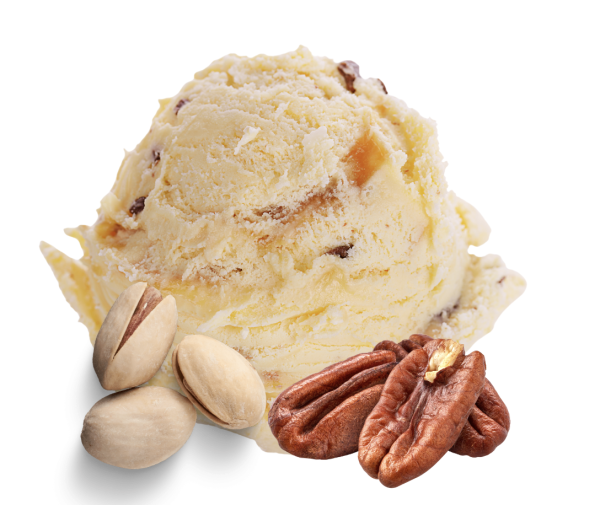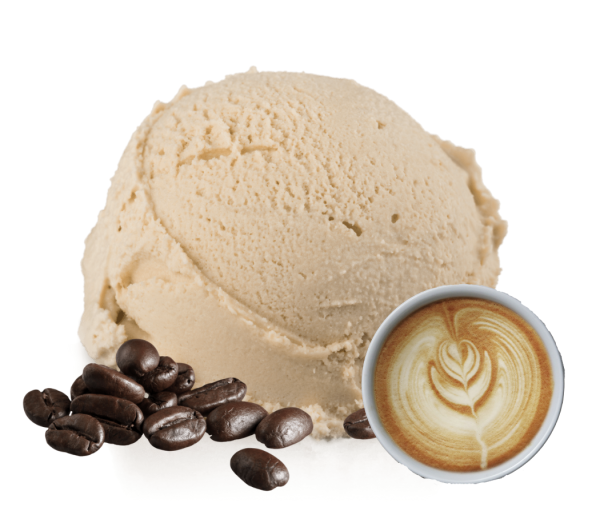While many picture climate change as a phenomenon that melts glaciers and stirs hurricanes, it also plays a role in impacting the production of a popular dessert: ice cream. Recent studies have shed light on how warming global temperatures can affect the ingredients that go into this popular summer treat. Whether mint chocolate chip, rocky road or pistachio is a staple in your freezer, the prices of these items can rise due to implications of the climate crisis. The World Meteorological Organization (WMO) has forecasted 2025 as one of the hottest years on record, potentially facilitating droughts, stunting crop metabolism and increase vulnerability to pests and disease. The effects of this may make its way into our grocery stores and onto our receipts — and the true impact could be chilling.
Fluctuating agricultural yields impact the dairy industry
Ingredients such as dairy and sugar are key in concocting this treat, yet they are falling victim to the precarious effects of climate change. Dairy cows are now subject to more heat stress than ever before. As temperatures continuously reach over 95°F, this creates a significant decrease in milk production and quality. The UDSA collected data on a farm in Southern Pennsylvania, which has started noticing annual losses in milk production due to excess heat. These average yearly losses are projected to be 1% to 2% by 2050 and up to 7% by the turn of the century. Additionally, they also found that escalating extreme weather conditions are predicted to increase field nutrient losses by 40% by mid-century and 87% by 2100. Coupled with long dry periods, soil compaction and erosion, this will largely affect feed quality, cow health and pasture suitability.
Just as dairy is ingrained in hundreds of foods that we enjoy daily, sugar is also something that is hard to picture living without. Extreme heat affects this sensitive crop as well, making it more susceptible to pests and diseases, as well as disrupting growth and flowering. The second and third-largest sugar exporters, India and Thailand, underwent severe droughts last year. The ensuing dry conditions dwindled their sugar supply immensely – leading to sugar prices skyrocketing by 55% in two months. Recently, the largest exporter of sugar, Brazil, also saw its share of droughts and wildfires that rattled its supply– turning the pressure back on Thailand and India to meet demand. Events like this show how the undeniably increasing amount of extreme weather affects our food and fuel “climate-flation.”
While sugar and dairy are integral to this iconic dessert, each coveted flavor has its own set of emerging issues in the production process.

Chocolate
Chocolate has always been a cult-classic – for many, there is simply no substitute. However, this commodity needs very specific conditions to grow. These plants flourish in fairly consistent temperatures, high humidity, plentiful rain, and nitrogen-rich soil usually found in tropical climates and rainforests. In fact, cacao trees are only grown within about 20° north and south of the equator. Human impacts on the tropical rainforests where these grow best have become prevalent and widespread. Patterns of deforestation and urban development threaten to take down entire ecosystems.
According to the National Oceanic and Atmospheric Administration, Côte d’Ivoire, Ghana, and Indonesia are the leading producers of this product– cultivating over half of global supply.
They found that 90% of the 294 cacao-producing land areas studied will become less suitable by 2050, as these areas will only grow warmer and drier each year. Additionally, the IPCC estimates that if we continue the “business as usual” approach to pressing climate issues, those top producers will see a 3.8°F increase in temperature by 2050. This will significantly mark down their suitable cultivation areas for this beloved good.
Nuts

The nut industry is very dependent on favorable weather conditions for their products to grow. The National Library of Medicine found that erratic wealth patterns will impact the warm wet-winter, dry-summer temperate areas where these are grown. Temperature increases during the winter are detrimental to these areas as nuts are very dependent on the winter chill for vital events such as dormancy release. If the plants do not flower on time, their growth could be impaired in many ways. Overall, a lack of cold winters could significantly lower nut production by the turn of the century.
Wholesale nut suppliers also worry about the quality and amount of nuts available for harvest. Nuts that are particularly affected include almonds, walnuts, pistachios, hazelnuts, and pecans. Large shifts in precipitation threaten to have the nuts ripen too slowly or quickly which will substantially affect supply chains.

Vanilla
Vanilla is an essential good that has been harvested for hundreds of years. Being native to Central and South America, the land used is very prone to extreme weather events and could be further aggravated by the unpredictability that climate change brings. According to the World Wildlife Fund, Madagascar supplies 85% of our global supply of vanilla; however, back in 2017, this island was devastated by a cyclone that destroyed 30% of this supply– creating record-high prices and a worldwide shortage.
Vanilla is very slow-growing and cultivation is labor-intensive, which often leads to us outpacing our supply. These hand-picked blossoms take four years to mature, with 300 hand-pollinated flowers producing just one pound of vanilla. Currently, demand requires 1.3 billion blossoms to be picked each year; yet, with storms, droughts, and heat stress, suppliers will surely struggle to meet this amount.
Coffee

Coffee is the second most consumed beverage in the world, yet the top producers of this commodity are expected to see significant decreases in the suitability of their land. Certain East African countries are expected to see up to 90% reduction by 2080. In Mexico, this amount will be a towering 98% by 2050, and Latin America will experience an 88% decrease by that year as well.
According to research by National Geographic, the top five producers of coffee in the world will have their best areas decrease in size and suitability. As temperatures increase and rainfall and humidity decrease, the coffee plants aren’t growing and reproducing as they should. Since heat can disturb plants’ metabolism, many will be unable to flourish and bloom fully. Additionally, climate change is part of the reason for the rapid spread of the leaf rust parasite. In the 1800s, it killed off most of the global supply of coffee, and in 2012, an unprecedented outbreak resulted in three billion dollars worth of damages.

Fruit
As global warming becomes increasingly prevalent, fruit crops are subject to extreme weather conditions, pollination disruption, more pests and diseases, and soil degradation. Excess heat has been proven to stunt growth and decrease leaf function, productivity, and fruit quality. Additionally, just like nut-producing plants, they require distinct cold and warm seasons to meet their physiological needs.
Looking at a specific acclaimed flavor– strawberry– it is evident that these berries could be largely impacted. An increase of 3 degrees Fahrenheit (predicted to occur by 2050) has the potential to reduce strawberry yields by 40%. This commodity could soon become increasingly scarce and expensive. The quality could also be seen to decrease as severe flooding events led to strawberries acquiring a “watery” flavor. Fruits such as mangos and other berries are also very sensitive to heat and will dwindle in number unless farmers and governmental organizations are able to recognize this issue and adapt efficiently.
Global rises in temperatures continue to strain resources
Overall, many crops– ranging from sugarcane to cacao to berries– will undoubtedly be affected by rising global temperatures. The extreme weather and temperatures that affect these products greatly have been proven to be connected to human-caused rise in greenhouse gases. While the production of ice cream also has a significant impact on the environment, companies will hopefully start to acknowledge this issue more often. For instance, Ben & Jerry’s is working to reduce emissions at all levels of its supply chain while simultaneously recognizing the vast amount of work that is still to be done.
The production of dairy products has an extensive impact on natural capital, leading to soil compaction, methane emissions, water pollution and a loss of biodiversity. In order to preserve our earth and the products we enjoy, it is vital to implement sustainable agriculture to increase resilience to climate change, reduce greenhouse gas emissions, and boost agricultural productivity. Though losing ice cream can appear trivial compared to the wondrous organisms and breathtaking landscapes that are also predicted to disappear, it shows how warming temperatures have a plethora of side effects that often go overlooked.














